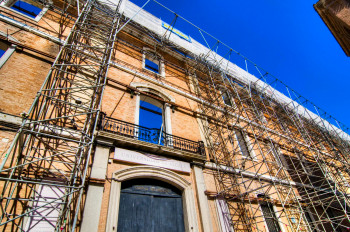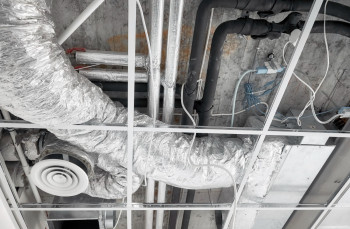Exploring the Relationship Between HOPE for HOME Resources and The Inflation Reduction Act

Providing ways to make better use of energy resources is nothing new, but it has taken on additional meaning in today's world. Along with provisions intended to improve the quality of life for US citizens and residents in general, the Inflation Reduction Act does allow for enhancing the way energy is utilized. What many people don't know is that the Act incorporates key elements of an earlier piece of legislation, the HOPE for Homes Act of 2020.
In order to understand the impact of this inclusion, it's important to get an idea of why this earlier attempt was worked into the final draft of the Inflation Reduction Act, what it means for consumers, and even how it will impact the way that contractors and other professionals will offer their services to those consumers. Here are some of the basics that everyone needs to know.
History of the HOPE for Homes Legislation

Senator Christopher Van Hollen Jr. introduced legislation in 2020 under the name of the HOPE for Homes Act of 2020. The primary purpose was to direct the Department of Energy to create a grant program that would support the costs of training professionals on retrofitting residential dwellings and improving energy efficiency. At the time, the legislation stalled. Ultimately, it did not receive enough attention to be passed. That would change in the year to come.
The Act was introduced a second time during Senate sessions in 2021. This time around, it did receive more attention and additional discussion. The White House chose to include funding for HOPE for Homes in the budget request for fiscal year 2022. That budget request was submitted for consideration in May 2021.
Given there were also plans to introduce additional legislation that would address rising inflation, there was a sense that what this bill was attempting to accomplish could be bundled into a more far-reaching piece of legislation. Discussions about that inclusion began and continued into the early part of 2022.
Inclusion in the Inflation Reduction Act

The agreement to include HOPE for HOMES within the provisions of the Inflation Reduction Act was achieved on July 27, 2022. The Senate voted and approved the Act on August 7 and referred it to the House of Representatives. The House approved the Act on August 12. From there, the legislation was sent to the White House, where it was signed into law on August 16.
As with a number of the provisions found in the Act, those related to the funding and training for retrofitting are slated to roll out over a period of time. In the interim, contractors, as well as consumers, would do well to learn more about what is included and how those provisions will make the process of making decisions about retrofitting easier for everyone. Doing so makes it easier to determine what form the retrofitting will take, including what will be used as the primary and possibly a secondary energy source for the newly fitted system.
Providing Consumer Education About Retrofitting Older Structures
One of those provisions focuses on equipping contractors and other professionals with how to educate their clients about retrofitting. That includes understanding why retrofitting matters as it relates to conserving energy. Consumers also learn more about how that conservation saves money as well as energy and what that can mean in terms of being able to remain comfortable within their homes and places of business.
Consumers will also find that there are provisions for offsetting the cost of retrofitting. Some of them come in the form of rebates on new equipment that's installed for that purpose. Other provisions allow consumers to take make the most of tax advantages that further offset the cost of making the upgrades.
To that end, grants designed to provide equip professionals to provide information to consumers is part of what takes place. Distributing that information may take the form of town halls, community gatherings, printed or digital data, and any other form that would convey information about energy conservation and retrofit in ways that consumers would embrace.
And Training for Contractors and Others
Professionals who are in the business of installing energy systems would also be eligible to receive grants and other benefits related to education. In this scenario, they would learn more about the process of retrofitting. This would apply to retrofitting all sorts of structures, ranging from houses to retail spaces to manufacturing plants.
Data about energy retrofits would include information about utilizing different types of energy in those settings. For example, contractors would learn how to install hybrid systems that make use of energy from solar arrays as well as pull energy from the local grid. Along with learning how to manage installations in older structures, much of what they learn equips them to help people choose the type of systems they want for their properties.
What Retrofitting Homes Accomplishes Now

Thanks to the resources that are made available, it's possible to explore the advantages that property owners begin to enjoy immediately after the retrofits are completed. For example, these benefits include:
- Immediately decreasing the amount of energy needed to manage heating, cooling, and other forms of energy consumption.
- Seeing a reduction in monthly energy costs due to the decreased energy consumption per billing period.
- Retrofitting lowers the risk of fires and other problems that may occur with older wiring.
- Potential savings on property insurance, thanks to the decreased risk of a covered event taking place.
- Homes and other structures are more comfortable for those who occupy the spaces.
Depending on the individual client, there may be additional advantages that will be present as soon as the retrofit is completed. The contractor who is overseeing the work can go over any of those other benefits at the time the project begins.
And What Retrofitting Does For Future Generations

Much of the focus of home energy retrofits has to do with the here and now. Property owners are interested in what sort of benefit their decisions to retrofit their buildings will provide. At the same time, it helps to understand what retrofitting now can mean for the future.
In terms of ongoing benefits, those property owners can look forward to enjoying lower power bills, given that they have more control over their energy consumption. That frees up additional cash that can be used for other purposes. From this perspective, retrofitting makes it easier to manage the household budget more effectively and will possibly aid in everything from a major purchase for the family to enjoy all the way to more funding to handle college expenses for the kids.
Retrofitting also helps to protect property values. The day may come when the property owner decides to sell the home. If that happens, there's no doubt a home which happens to be more energy efficient is likely to attract positive attention from potential buyers.
If the plan is to leave the property to a child, retrofitting now will mean one less task that the child will face in the future. Retrofitting doesn't eliminate all the reasons for later upgrades, but it does minimize the chances that the child will have to have major work done on the home's power system immediately after receiving ownership.
Last, retrofitting now means decreasing the demand for limited resources. This is especially true when the home is retrofitted to make use of alternative forms of energy that happen to be renewable. From this perspective, retrofitting goes beyond making a better world for whoever owns the property; it actually improves things for those who will be around in the years to come.
How Contractors and Consumers Can Learn More About Hope for Homes Within the Inflation Reduction Act
There's a wealth of information about the Inflation Reduction Act and even about what was pulled from the original HOPE for HOME legislation and included in the later Act. A great deal can be found by visiting government sites that supply the actual verbiage of the Act. It's also possible to find summaries of the provisions on the Department of Energy and similar sites.
Associations and other non-profits that have some connection with the energy industry also have resources available. That makes it easier for property owners as well as contractors to learn more about retrofitting and how it works. Unions are another example of resources that can often provide information that their members can put to good use.
The bottom line is that the work began with HOPE for HOMES is continuing with the provisions found within the Inflation Reduction Act. Those who are interested in entering the field of home energy solutions, whether as contractors, auditors, or in some other capacity, will find that there are provisions that will help them achieve those goals. Further, consumers can look forward to the rebates, tax breaks, and other benefits that will come their way thanks to this legislation.
Now is the time to consider pursuing a career in this important field. Find out more about what sort of classes are available, the career paths that are open, and what would help make it all happen. You may be surprised at what sort of support is now on hand to help you reach those goals.

